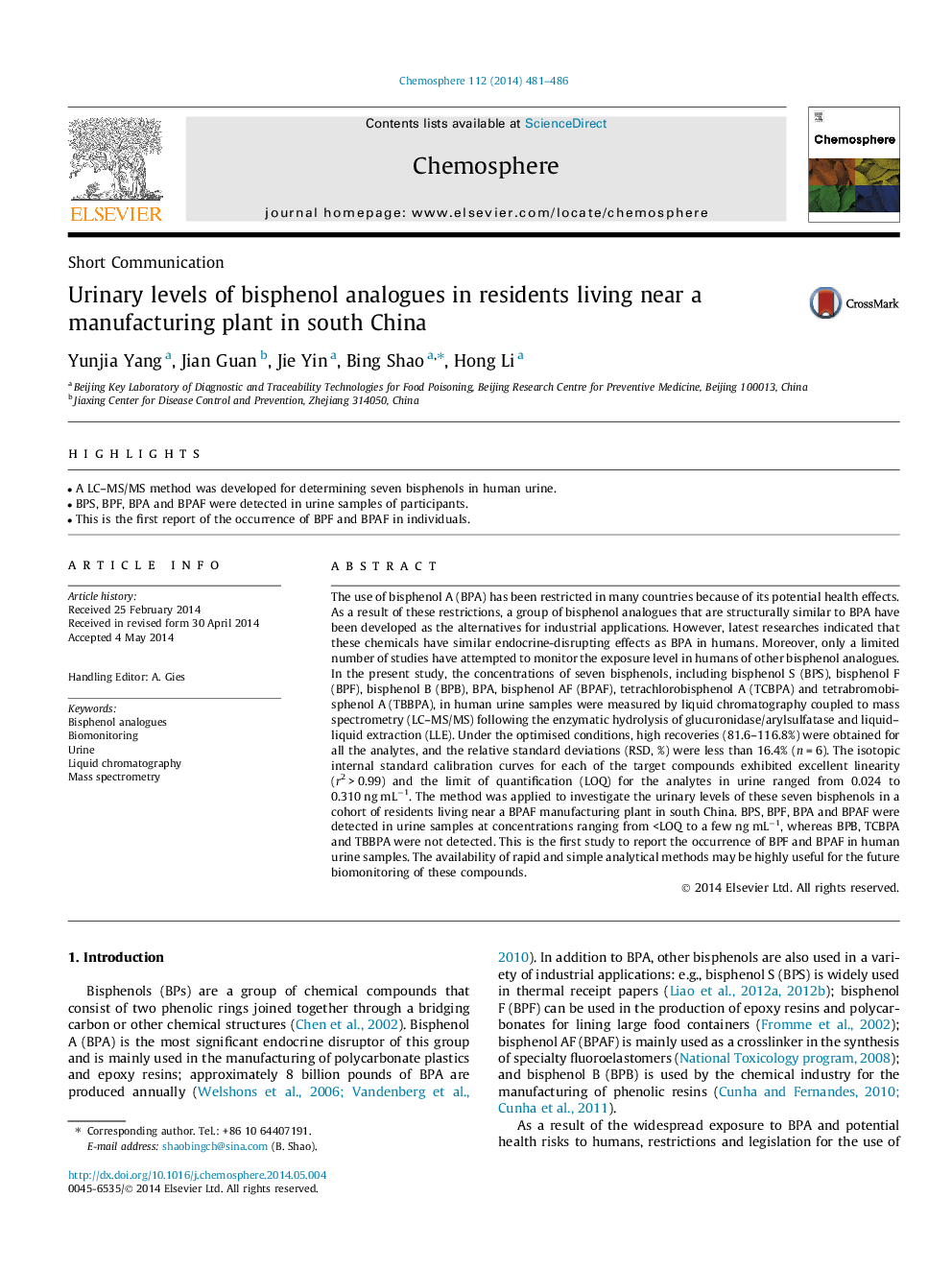| Article ID | Journal | Published Year | Pages | File Type |
|---|---|---|---|---|
| 6308900 | Chemosphere | 2014 | 6 Pages |
Abstract
The use of bisphenol A (BPA) has been restricted in many countries because of its potential health effects. As a result of these restrictions, a group of bisphenol analogues that are structurally similar to BPA have been developed as the alternatives for industrial applications. However, latest researches indicated that these chemicals have similar endocrine-disrupting effects as BPA in humans. Moreover, only a limited number of studies have attempted to monitor the exposure level in humans of other bisphenol analogues. In the present study, the concentrations of seven bisphenols, including bisphenol S (BPS), bisphenol F (BPF), bisphenol B (BPB), BPA, bisphenol AF (BPAF), tetrachlorobisphenol A (TCBPA) and tetrabromobisphenol A (TBBPA), in human urine samples were measured by liquid chromatography coupled to mass spectrometry (LC-MS/MS) following the enzymatic hydrolysis of glucuronidase/arylsulfatase and liquid-liquid extraction (LLE). Under the optimised conditions, high recoveries (81.6-116.8%) were obtained for all the analytes, and the relative standard deviations (RSD, %) were less than 16.4% (n = 6). The isotopic internal standard calibration curves for each of the target compounds exhibited excellent linearity (r2 > 0.99) and the limit of quantification (LOQ) for the analytes in urine ranged from 0.024 to 0.310 ng mLâ1. The method was applied to investigate the urinary levels of these seven bisphenols in a cohort of residents living near a BPAF manufacturing plant in south China. BPS, BPF, BPA and BPAF were detected in urine samples at concentrations ranging from
Related Topics
Life Sciences
Environmental Science
Environmental Chemistry
Authors
Yunjia Yang, Jian Guan, Jie Yin, Bing Shao, Hong Li,
